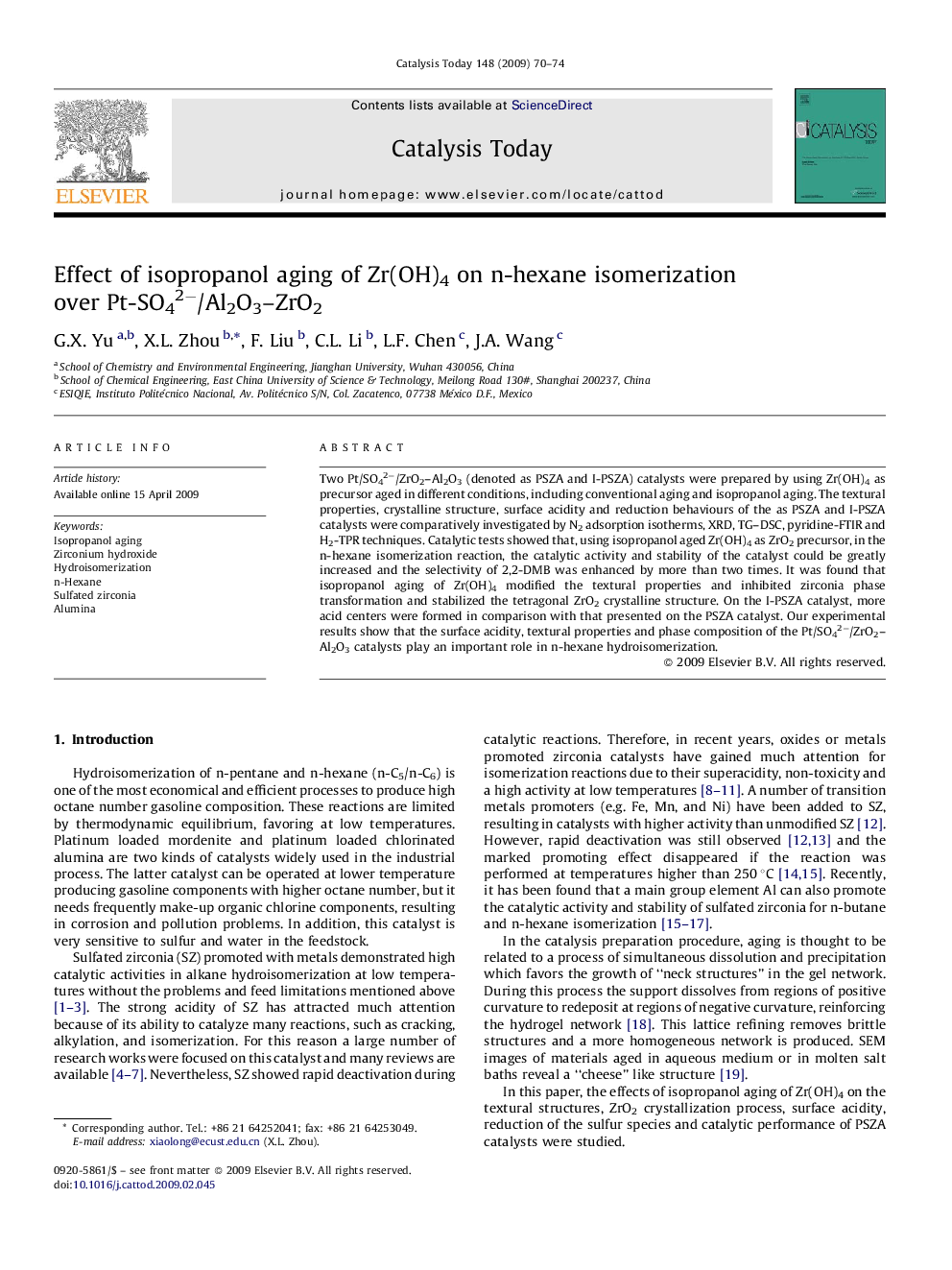| Article ID | Journal | Published Year | Pages | File Type |
|---|---|---|---|---|
| 57039 | Catalysis Today | 2009 | 5 Pages |
Two Pt/SO42−/ZrO2–Al2O3 (denoted as PSZA and I-PSZA) catalysts were prepared by using Zr(OH)4 as precursor aged in different conditions, including conventional aging and isopropanol aging. The textural properties, crystalline structure, surface acidity and reduction behaviours of the as PSZA and I-PSZA catalysts were comparatively investigated by N2 adsorption isotherms, XRD, TG–DSC, pyridine-FTIR and H2-TPR techniques. Catalytic tests showed that, using isopropanol aged Zr(OH)4 as ZrO2 precursor, in the n-hexane isomerization reaction, the catalytic activity and stability of the catalyst could be greatly increased and the selectivity of 2,2-DMB was enhanced by more than two times. It was found that isopropanol aging of Zr(OH)4 modified the textural properties and inhibited zirconia phase transformation and stabilized the tetragonal ZrO2 crystalline structure. On the I-PSZA catalyst, more acid centers were formed in comparison with that presented on the PSZA catalyst. Our experimental results show that the surface acidity, textural properties and phase composition of the Pt/SO42−/ZrO2–Al2O3 catalysts play an important role in n-hexane hydroisomerization.
